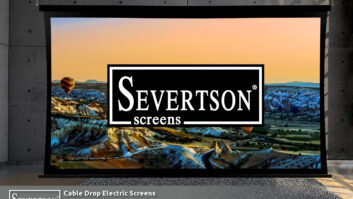New York — The cable industry is working harder to tear down the wall between itself, CE manufacturers and retailers to advance its interests and broaden its service offerings to include home networking and Internet telephony, said cable industry executives at a CableLabs media briefing held here on June 19.
The signature retail initiative launched by the Louisville, Colo.-based standards body, Go2Broadband, is being widened this July to incorporate searches for Cable Card compatibility, and later upgrades will incorporate home networking and VoIP options, said Jenifer Cistola, VP, Go2Broadband, CableLabs.
“This year we’re also focused on improving the efficiency of the end-to-end transaction,” Cistola said.
She added that sales orders from retail locations offering the Go2Broadband program accounted for 21 percent of the cable industry’s high speed data sales leads, and that the hope is that the success will continue as the service offerings broaden.
Don Dulchinos, VP, advanced platforms and services, CableLabs, said that another major milestone in CE-cable cooperation, the Plug-and-Play Agreement, is currently undergoing a second, more expansive round of negotiations involving not just CE vendors but the IT and content communities as well.
The goal, Dulchinos said, is to enable CE devices to handle “the full suite of cable-delivered services” and to secure cooperation from Hollywood and the content community.
“It is important for cable to team with the consumer electronics community to get the retail presence and for cable to be associated with the CE industry’s” cachet of cool and innovative, Dulchinos said.
According to Kevin Leddy, senior VP, strategy and development at Time Warner Cable, the five-month-long negotiations have been largely focused on content protection and have admittedly been “very complicated.”
VoIP telephony also figured prominently in the discussions as MSOs touted the superiority of their services against over-the-counter competitors, such as Vonage and AT&T’s Call Vantage.
The key differentiator, said Glenn Russell, director, multimedia applications, advanced network systems, CableLabs, is that services such as Vonage rely on the public Internet to route calls using a “best effort” system that leaves the voice data at the mercy of the “vagaries” of the Internet. In contrast, most cable company offerings employ CableLabs’ PacketCable standard to ensure Quality of Service (QoS), allocating more bandwidth where necessary rather than relying on the “best effort” systems. In practical terms, it means that the cable companies can ensure consistent voice quality and connections, Russell said.
It also means that for now these services will rely on a cable company truck roll for distribution and installation to connect the home phone wiring to the cable company’s network. They will not be distributed through retail ala cable modems/data services, at least not initially.
Cablevision Systems’ chief operating officer Tom Rutledge indicated that a self-installable VoIP solution was something the company was working on for the future.
Most MSO VoIP providers indicated that richer features that take advantage of cable’s generous bandwidth are around the corner to make VoIP offerings more attractive. Caller ID on a television, WiFi VoIP, videophones and interactive gaming were among the potential avenues in which the MSOs expressed interest.













